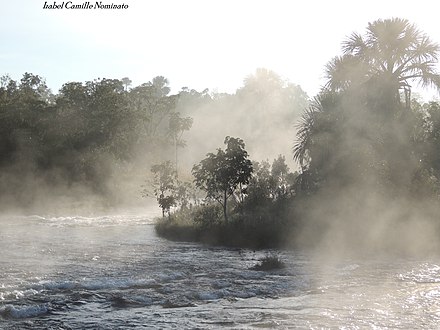Emas National Park - UNESCO World Heritage Site in Goiás, Brazil

Understand
The surrounding area is dominated by large soybean plantations.
History
Landscape
Flora and fauna
Emas National Park shows a typical cerrado ecosystem: a treeless savannah with tall termite mounds and an interesting amount of wildlife: the giant anteater, the maned wolf, giant armadillo, pampas deer, and the greater rhea, among others.
Emas National Park also holds a small jaguar population, perhaps consisting of about 10-12 animals. Only about 40% of the reserve, which covers 1,320 km² (510 sq mi) in total, is good jaguar habitat.
Other larger mammals include puma, ocelot, Brazilian tapir, collared peccary, white-lipped peccary, marsh deer, red brocket, gray brocket, black howler monkey and capybara.
Climate
It has a tropical, hot climate, ranging from humid to semi-arid, with up to five months of drought each year.
Get in
Chapadão do Céu is the closest municipality to the park, approximately 25 km away. It has services such as banking, mechanics, pharmacists, and mail. Mineiros, the main urban center in the region, 110 km away from the headquarters of the national park is a larger town with medical service.
Fees and permits
Get around
See
Do
Buy
Eat
Drink
Sleep
Lodging
Camping
Backcountry
Stay safe
Go next
Emas National Park
parquenacionaldasemas.com.brGoiás
Primary administrative division